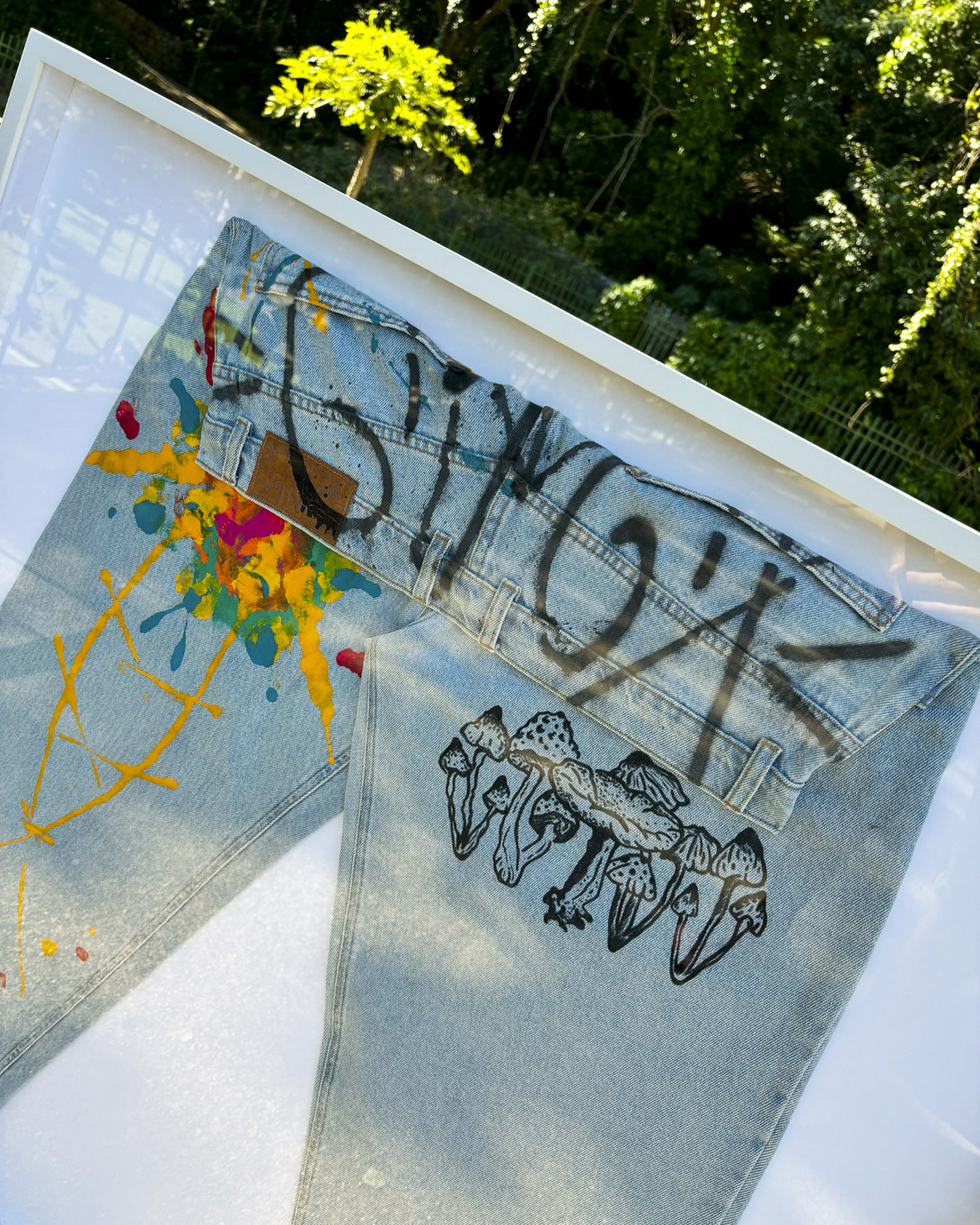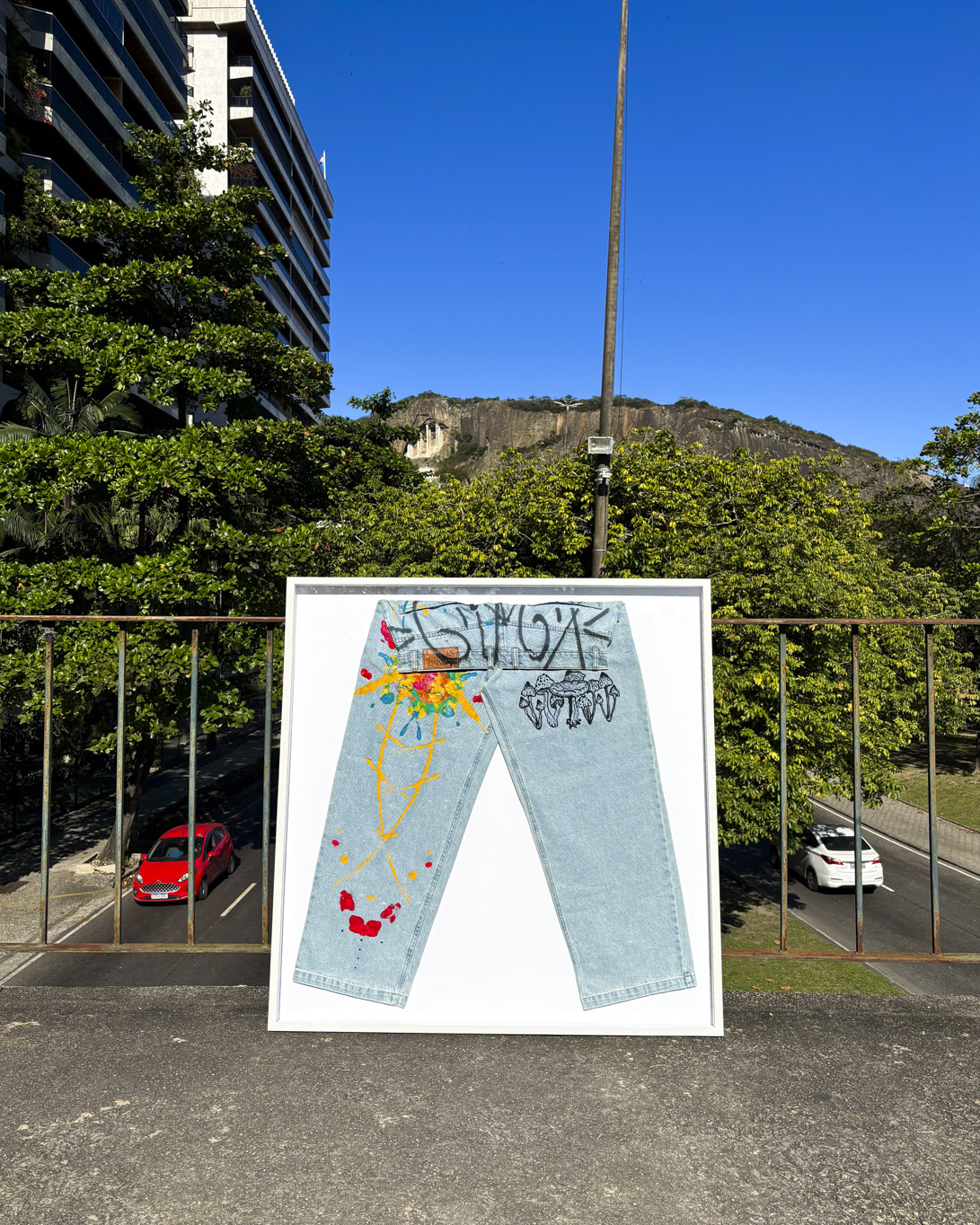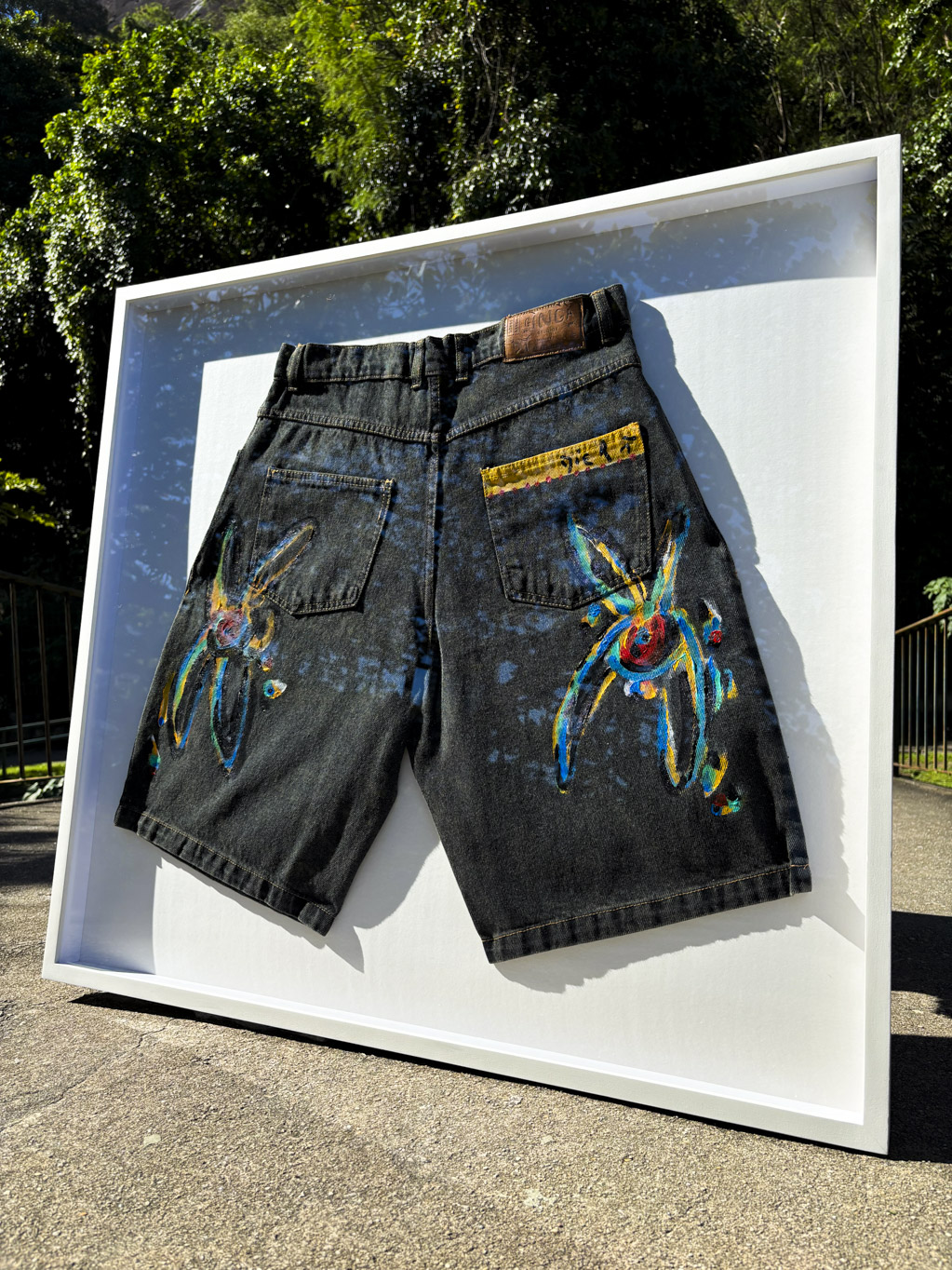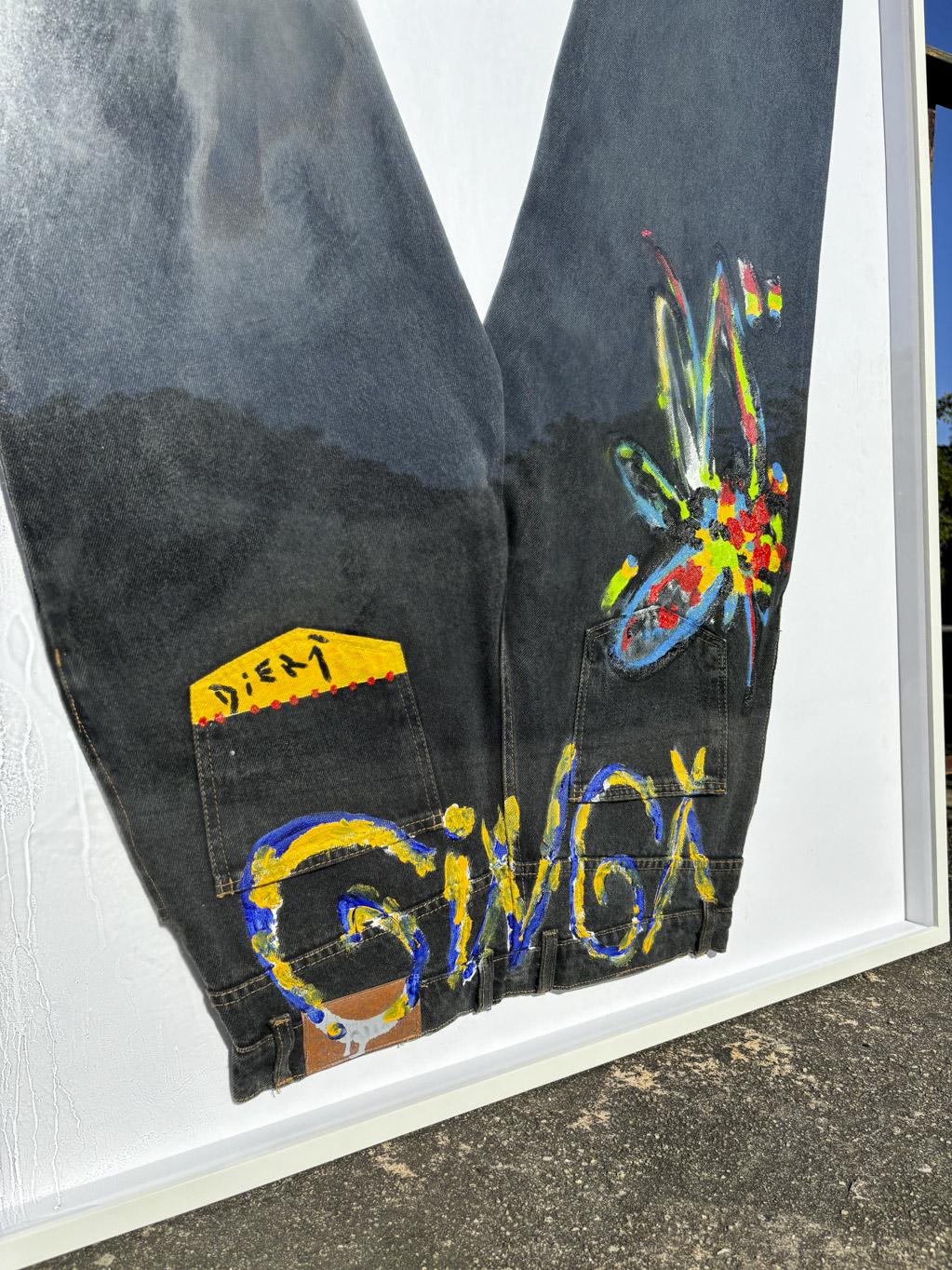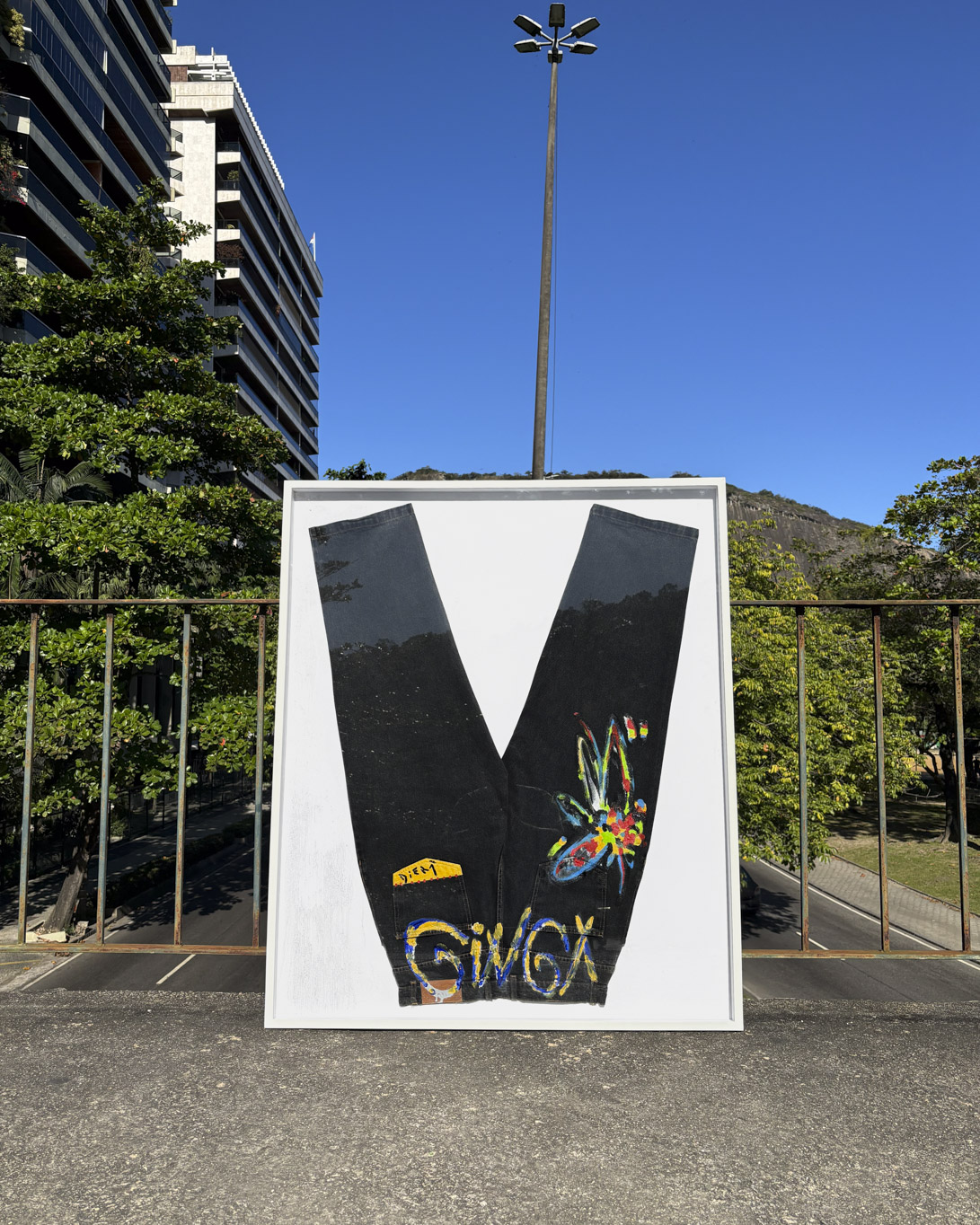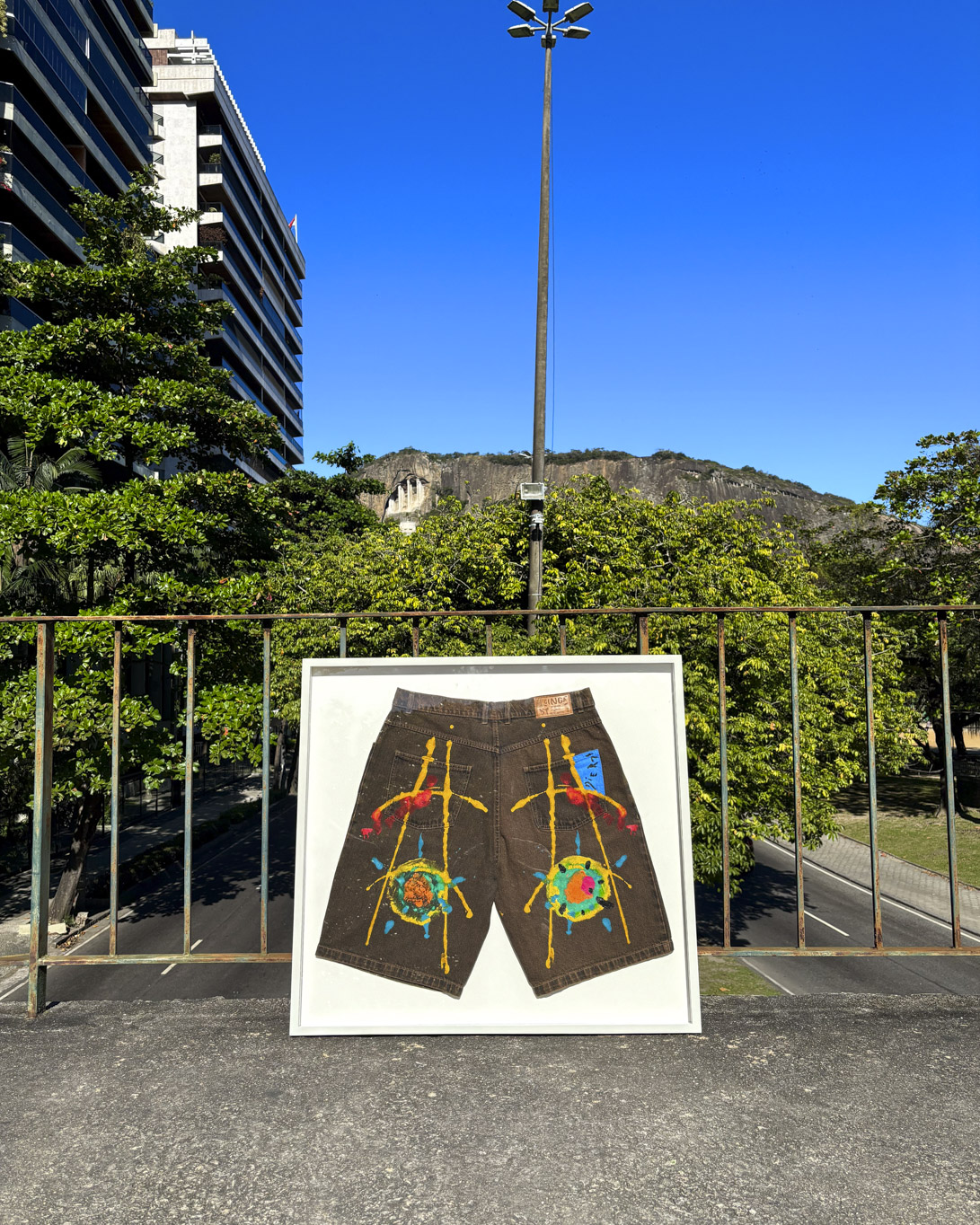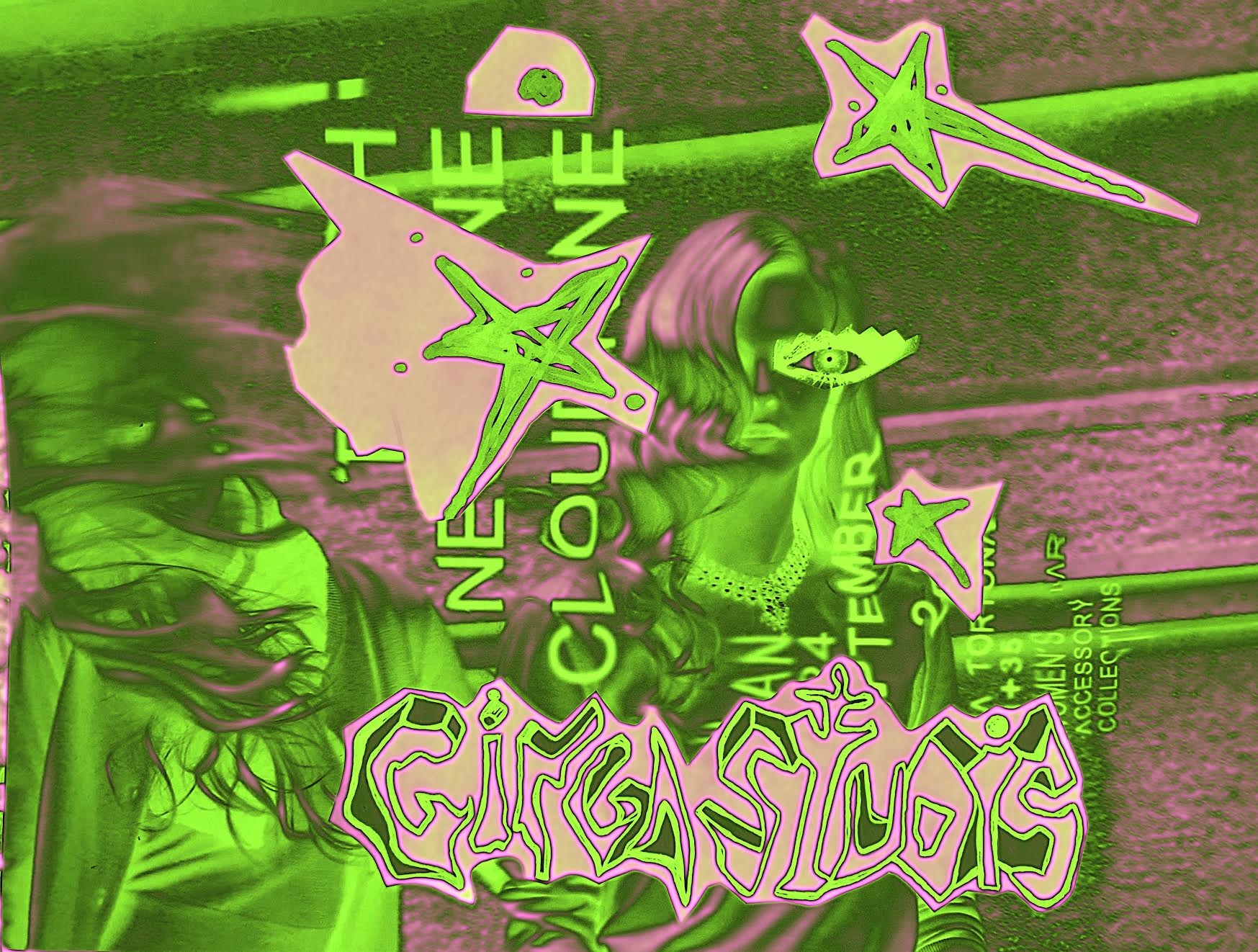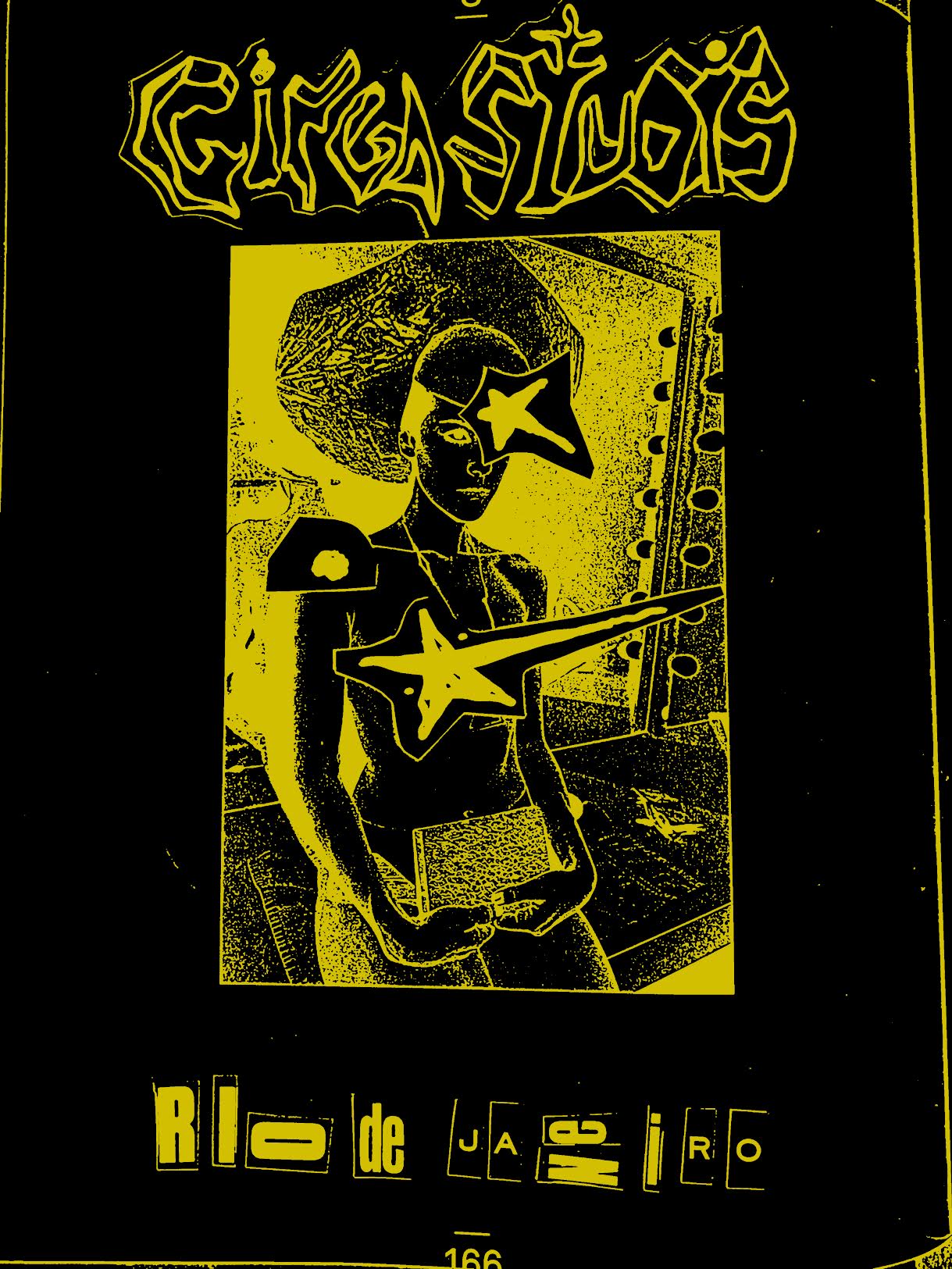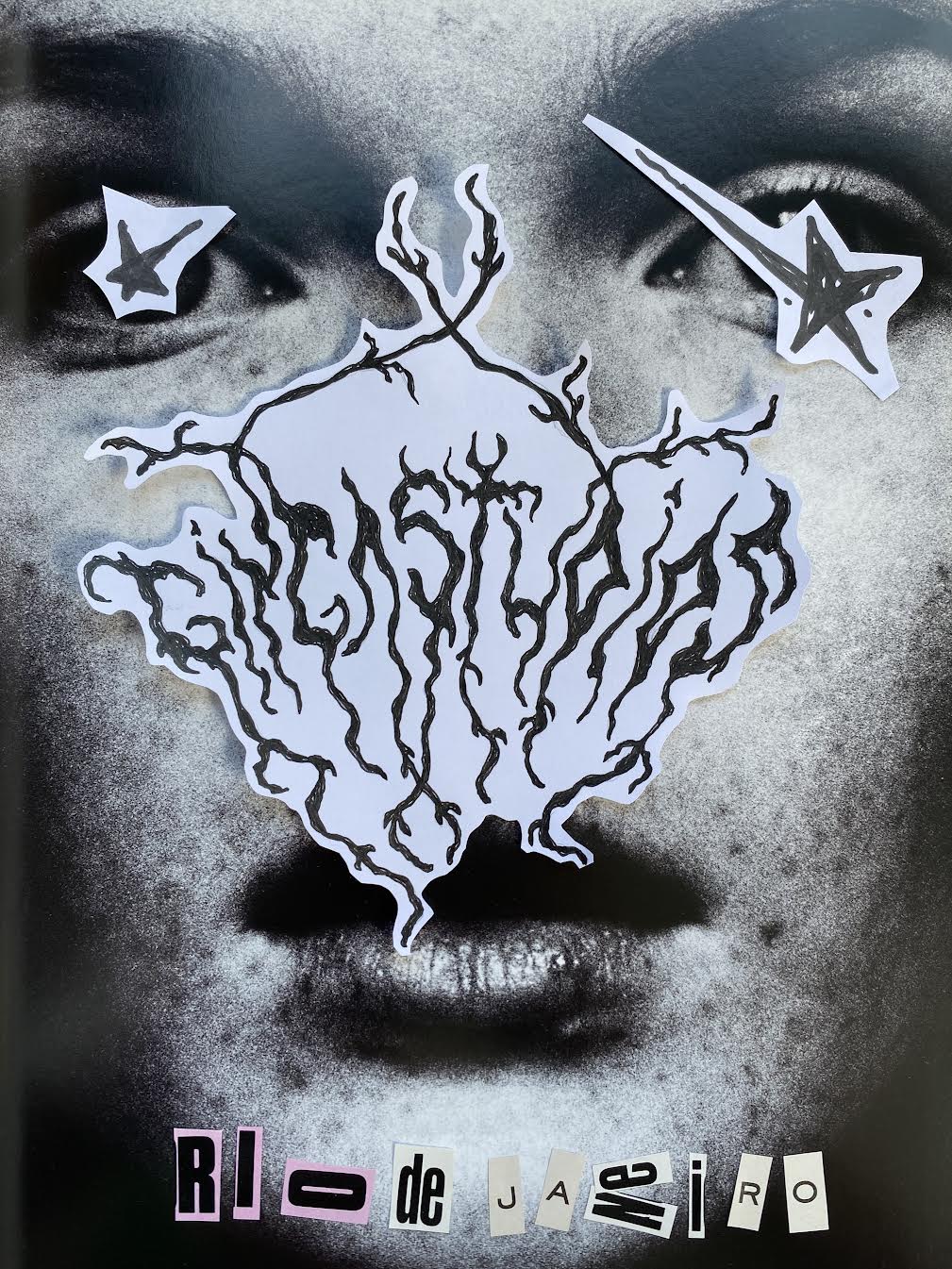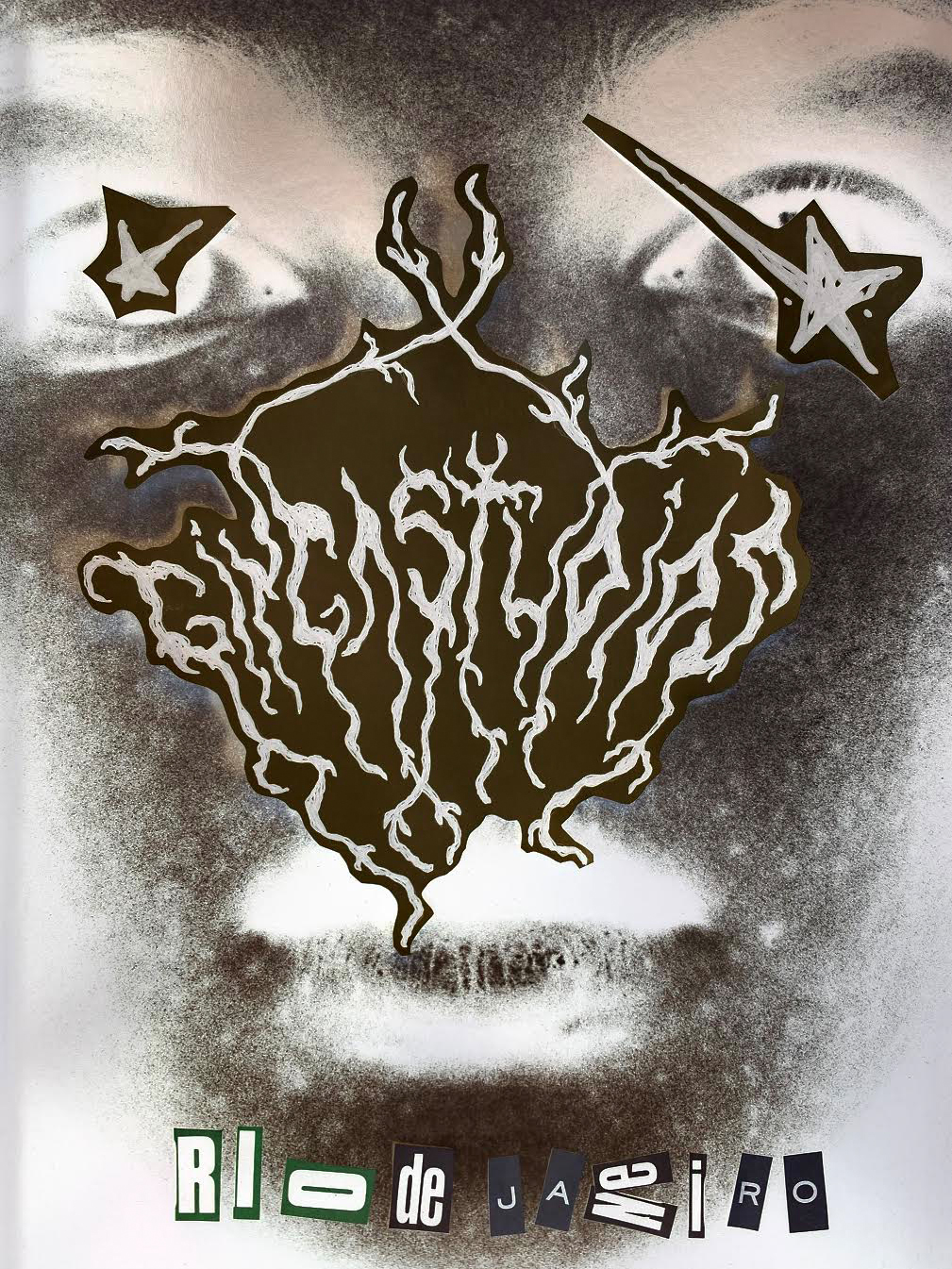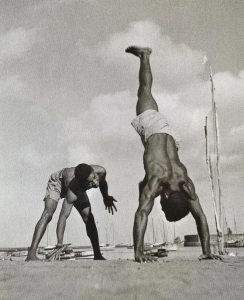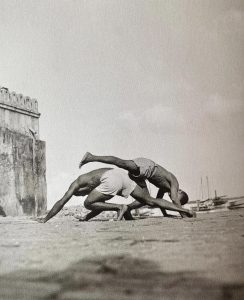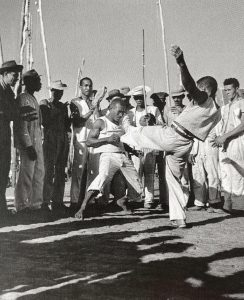GINGA art not for sale
At Ginga Studios, we believe fashion goes beyond clothing — it is a form of art. With each collection, we collaborate with local artists to create unique pieces. This time, we invited an artist from Florianópolis to hand-paint four of our jeans (two shorts and two pants), transforming them into true works of art.
These pieces are the result of a unique fusion between fashion and contemporary art and are not for sale. They symbolize our dedication to creativity and originality. Additionally, the artist also developed exclusive t-shirt prints made from collages of vintage fashion magazines, which will soon be available in our collection.
(Artist, fashion designer, and material collector, Dierã Marques @dieramarques )
